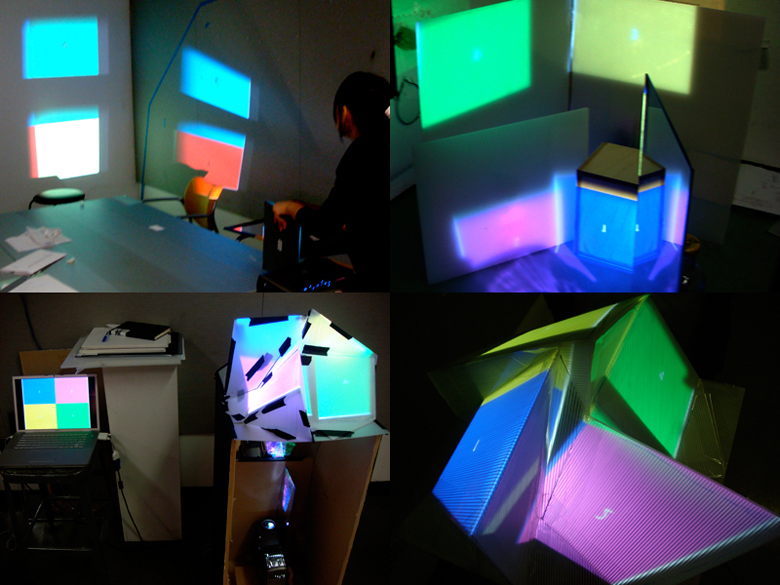Multiple Points of View
How does one perceive their own existence to be? What do you see and what do you remember? Photographer, Barbara Probst, captures photographic moments through varying perspectives. Despite the static nature of photography, the viewer is able to appreciate movement through her photographic sequences. I think this idea is an interesting approach to revealing a moment of different points of view. Another example of this multi-perspective based work is the movie 'Rashomon.' Its four main characters narrate their overlapping stories throughout the film. The goal of this project was to create a storytelling device that would portray multiple perspectives in physical space. I came up with a form made of four transparent screens. Four movie clips were projected from beneath it, while two mirrors divided the projection upon the object. This project was called 4.5D, referring to the flat images projected onto a three dimensional form. In order to see the images simultaneously from different perspectives, the audience would have to move around the form. For the content of 4.5D, the movie 'Timecode,' directed by Mike Figgis, was displayed. This movie is made of four sections, which are shot by four different cameras. Figgis' innovative narration fit nicely with 4.5D's mode of viewing. From this project, a new form of viewing that delivers many different experiences, as opposed to the traditional method of fixed movie watching, was the result.
Inspiration>>>

Process>>>

|
|

